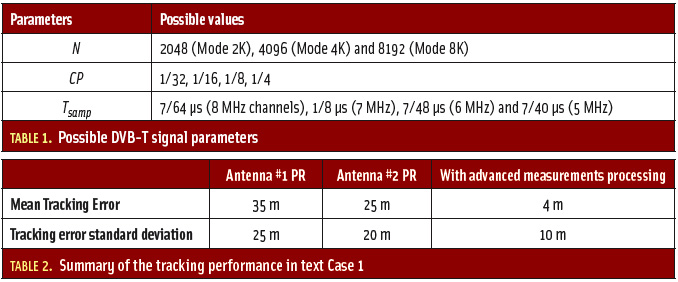
For the current civilian GPS C/A code transmission with which people
are most familiar, each GNSS satellite transmits an individual periodic
code employing the principle of code division multiple access (CDMA).
The code itself is modulated onto a carrier using a phase shift keying or PSK(fC) technique where fC is a code rate.
The aim of signal processing design, then, is to estimate the relative
delay in each incoming satellite signal, in order to compute the
location of the receiver.
For the current civilian GPS C/A code transmission with which people
are most familiar, each GNSS satellite transmits an individual periodic
code employing the principle of code division multiple access (CDMA).
The code itself is modulated onto a carrier using a phase shift keying or PSK(fC) technique where fC is a code rate.
The aim of signal processing design, then, is to estimate the relative
delay in each incoming satellite signal, in order to compute the
location of the receiver.
Time and technology move on. Based on a 2004 agreement between the
European Union and the United States, the new European Galileo and the
up-graded American GPS will make substantial use of the different
modulation called Binary Offset Carrier (BOC).
Essentially, BOC multiplies a subcarrier as well as a code, onto the
carrier. Standard nomenclature is BOC(fs , fc) where fs is a subcarrier
frequency and fc is a code rate. “Sine BOC” and “Cosine BOC” may be
identified, depending on the phasing of the subcarrier to the code
boundaries. We adopt here nomenclature “BOCs” and “BOCc,” respectively.
John Betz, of the MITRE Corporation, introduced the concept of BOC in
1999. Two papers by him, cited in the Additional Resources section near
the end of this article, discuss the BOC modulation in greater detail.
Figure 1 (Note: to see Figure 1, download PDF above)
illustrates BOCs(2f, f) where a “square sine” having a frequency twice
the code rate is identified. A chip width Tc = 1/fc and a sub-chip
width Ts = 1/(2fs) may be defined here.
As a consequence of the subcarrier modulation, the spectrum of this new
BOC signal is split into two sidebands located above and below the
nominal carrier frequency.
Although the CDMA principle still applies, the BOC design now admits an
element of frequency division multiple access (FDMA). This manifests
itself in the multiple sharing of heritage PSK and BOC signals of
different subcarrier rates, many of which are sharing the same carrier
frequency. (A clear summary of all adopted modulations and processes is
given in an article in the September/October 2007 issue of Inside GNSS,
“The MBOC Modulation.”)
BOC offers some advantages compared to PSK modulation as used by the
present-generation GPS. However, a significant problem appears in its
practical reception, as attested by many engineering papers and recent
practical tests. See for example the papers by P. D. Blunt et alia and
A. Simsky et alia listed in Additional Resources.
Essentially, the problem arises from the multi-peaked correlation
function characteristic of BOC and the potential for a receiver
encountering “false lock” or “false node tracking” on a secondary
rather than the primary peak.
In this article, we will present a new receiver principle that we
believe overcomes this problem in a radical manner. Simulations and
early practical tests have provided substantial corroboration that the
new solution works.
We will explain here in much greater detail — and offer a more
systematic development — than the succinct account published in the
article by M.S. Hodgart and P. D. Blunt cited in Additional Resources
. . .
Conclusion
The double estimator has been demonstrated to work through extensive
simulation, with bench tests on a BOC(1,1) signal generated by an
SSTL-built Galileo signal generator, and finally with live signals from
the GIOVE-A satellite.
Many experimental tests on these real BOC signals confirm that
convergence of a double-estimator triple-loop receiver is smooth and
stable. Performance in noise and multipath seems satisfactory. The
design is believed to be inherently tolerant and adaptive to group
delay distortion.
Simulations indicate that, in principle, the receiver should be able to
cope with the European BOC(15, 2.5) signal on which difficulties have
been reported using the bump-jumping technique. Development has begun
to demonstrate this in practice.
A patent application was initially registered to the University of
Surrey in the name of the inventors (Hodgart and Blunt) Reg. no
GB0624516.1. An international patent application was subsequently filed
and has been recently published.





